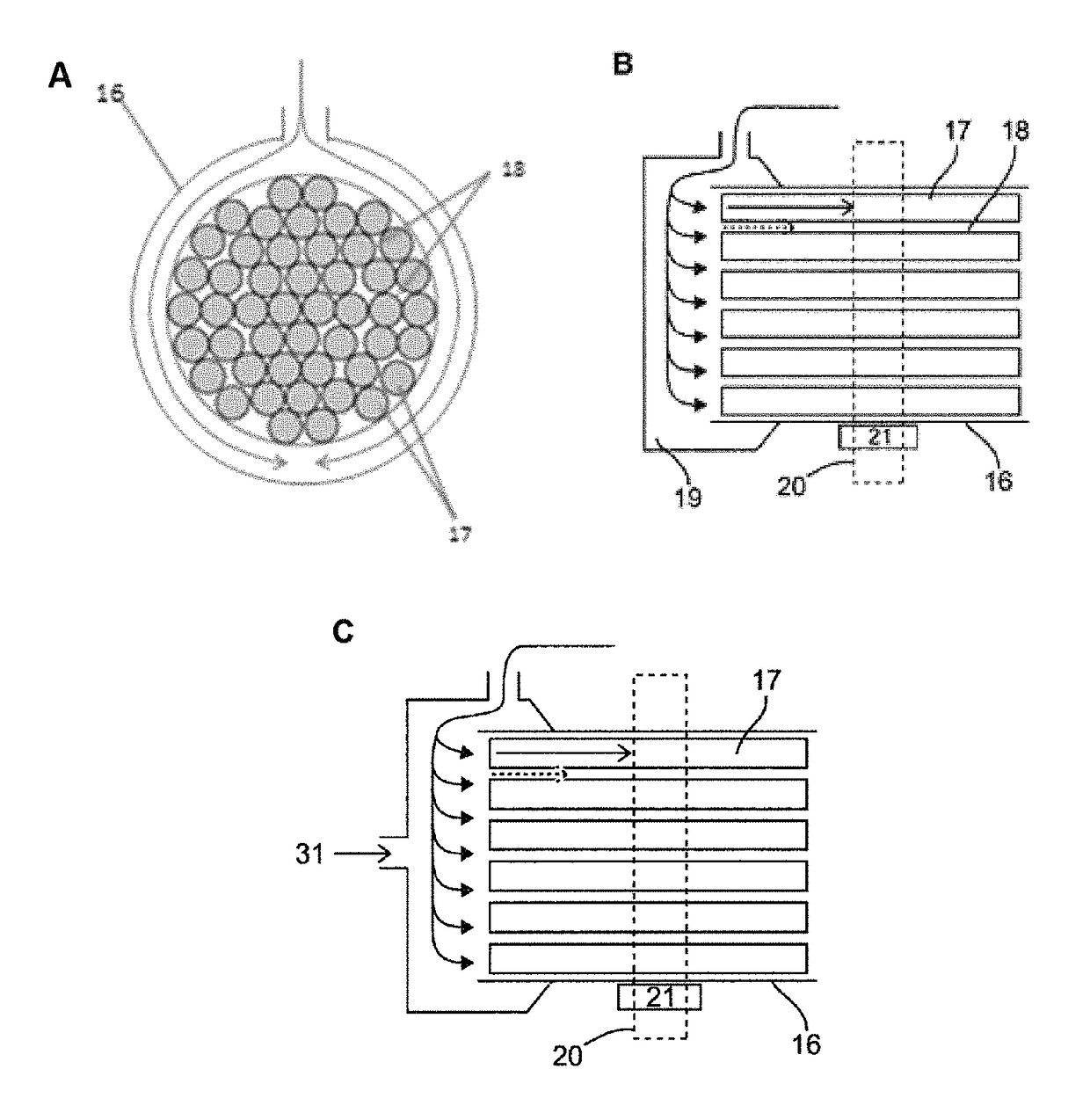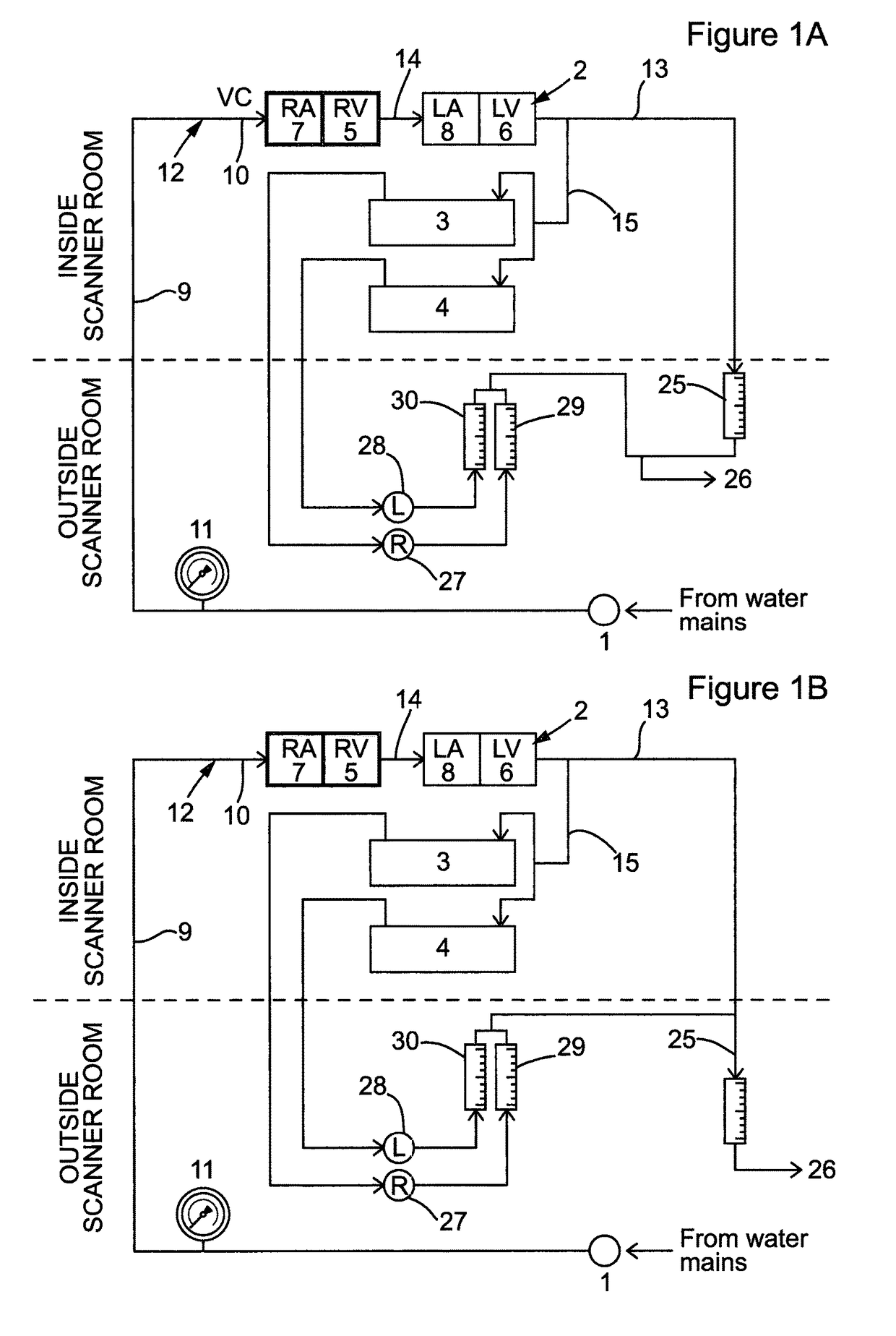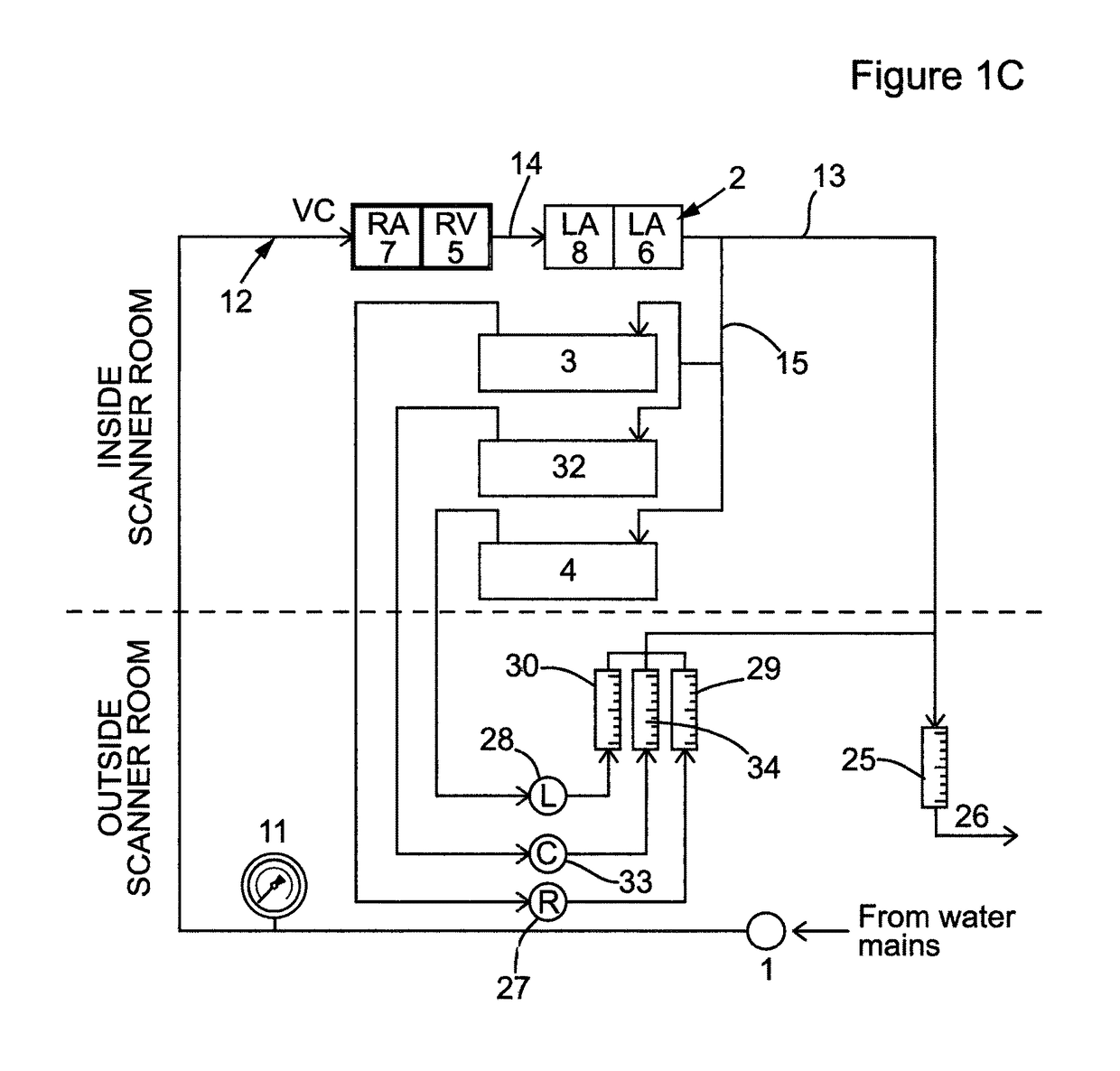Perfusion phantom device
a technology of phantom device and phantom, which is applied in the field of perfusion phantom device, to achieve the effects of reducing the risk of temporal variation of dispersion, rapid development, validation and calibration of accurate quantification methods, and reliable, reproducible and efficient simulation of myocardial perfusion
- Summary
- Abstract
- Description
- Claims
- Application Information
AI Technical Summary
Benefits of technology
Problems solved by technology
Method used
Image
Examples
example 1
Design of the Device
[0097]The phantom was designed to simulate dynamic of first-pass myocardial MR perfusion after the injection of a bolus of a Gadolinium-based contrast agent. The system is made up of three main parts: the main pump generating water flow in the circuits located outside the MR room, the MR-compatible unit (the phantom) located in the scanner and the control unit located outside the MR scanner room (FIGS. 1A-C and 2).
The Main Pump
[0098]The main pump (1) maintains the water flow across the phantom and was located outside the MR room indicated by the region below the dotted line in FIGS. 1A-C. Various pumps producing continuous or pulsatile flow can be fitted to the system. Alternatively, it can be driven by water pressure from a water tap, as performed in our laboratory in some preliminary experiments (data not shown). Furthermore, the system can be configured as an open or a closed circuit. In the open circuit configuration (FIGS. 1A-C), the system is continuously s...
example 2
Sensitivity to Different Contrast Agent Dose
[0117]The phantom described in Example 1 was used to assess the effects of different dosages of contrast agent on the SI of the AIF and to calculate the saturation ratio (expected peak SI / observed peak SI). Gadobutrol was injected at doses representing 0.0005, 0.001, 0.0025, 0.005, 0.01 and 0.1 mmol / kg in the following experimental conditions: cardiac output 3 L / min, right and left myocardial perfusion rate 10 mL / g / min.
[0118]To assess the effects of different dosages of contrast agent on the SI of the myocardial compartments and to calculate the saturation ratio, gadobutrol was injected at doses representing 0.001, 0.0025, 0.005 and 0.01 mmol / kg in the following experimental conditions: cardiac output 3 L / min, right and left myocardial perfusion rate 10 mL / g / min.
[0119]A progressive increase in the peak AIF SI was noted with increasing doses of Gadolinium (FIG. 5, panel A). A very low dose, equivalent to 0.0005 mmol / kg of body weight, of Ga...
example 3
Sensitivity to Myocardial Perfusion Rate
[0123]To assess the sensitivity of the system of Example 1 to different myocardial perfusion rates, first pass perfusion measurements were performed varying the perfusion rate in the L-myoc (1, 2.5, 5, 7.5 and 10 mL / g / min), in the following experimental conditions: cardiac output 3 L / min, contrast agent dosage 0.01 mmol / kg body weight.
[0124]The system showed good sensitivity for different perfusion rates, generating independent curves for the different perfusion values tested (between 1 and 10 mL / mL / min). FIG. 6 shows the time-intensity curves recorded from the aorta and the myocardial compartments for different perfusion rates.
[0125]Quantification of myocardial perfusion, provided results consistent with the gold standard perfusion measurements obtained by the phantom's flow meters. The results were as follows (deconvolution measured perfusion rate±standard deviation / actual perfusion rate): 10.4±0.4 / 10, 7.4±0.3 / 7.5, 4.7±0.1 / 5, 2.9±0.2 / 2.5, 1....
PUM
 Login to View More
Login to View More Abstract
Description
Claims
Application Information
 Login to View More
Login to View More - R&D
- Intellectual Property
- Life Sciences
- Materials
- Tech Scout
- Unparalleled Data Quality
- Higher Quality Content
- 60% Fewer Hallucinations
Browse by: Latest US Patents, China's latest patents, Technical Efficacy Thesaurus, Application Domain, Technology Topic, Popular Technical Reports.
© 2025 PatSnap. All rights reserved.Legal|Privacy policy|Modern Slavery Act Transparency Statement|Sitemap|About US| Contact US: help@patsnap.com



